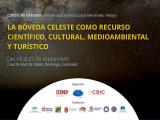Archivo de noticias y eventos
551 - 600 de un total de 1805
También puede acceder a la lista de noticias publicadas en los medios relacionadas con el Instituto de Astrofísica de Andalucía - CSIC.
Pages

|
07/03/2018 - 12:30
Mesa redonda: "Luces y sombras en la carrera científica de las mujeres. Hacia una igualdad efectiva entre hombres y mujeres." Componentes de la mesa: Laly Gallego, contratada predoctoral Marta González, contratada postdoctoral Rosa González, primera profesora de investigación del IAA Rosa de Castro, gestora de proyectos europeos Nuria Rico, profesora de la ETS de Ingenierías Informática y de Telecomunicaciones de la UGR. Lucia Estevan, contratada FPU de la UGR y activista de la plataforma @huelga8mgranada Coordina: Isabel Márquez, vicedirectora del IAA Mesa redonda |

|
22/02/2018 - 12:30
LIGHT AND SHADOW IN THE GALACTIC CENTER The luminous S-star cluster in the Galactic center allows us to study the physics close to a super-massive black hole including distinctive dynamical tests of general relativity. Our best estimates for the mass of and the distance to Sgr A* is currently obtained using the three shortest period stars. Additionally, we aimed at a new and practical method to investigate the relativistic orbits of stars in the gravitational field near Sgr A... Prof. Andreas Eckart |

|
30/11/2017 - 19:00
Y el dolor nos cayó del cielo Recorrido histórico y alegórico del dolor, que comenzará con referencias del Génesis y culminará revisando las dolencias de los astronautas Ignacio Velázquez Rivera |

|
25/01/2018 - 12:30
Diffuse Ionized Gas in CALIFA (and MaNGA) galaxies We use spatially resolved spectroscopy from the CALIFA survey to study the nature of the line emitting gas in galaxies of different Hubble types, focusing on the separation of star-forming (SF) regions from those better characterized as diffuse ionized gas (DIG). The diagnosis is carried out in terms of the equivalent width of Ha (W_Ha). Three nebular regimes are identified: (1) Regions where W_Ha... Dr. Roberto Cid Fernandes |
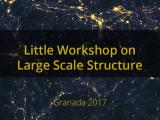
|
20/11/2017 - 24/11/2017
Little Workshop on Large Scale Structure Granada |

|
18/01/2018 - 12:30
Dust belts around Proxima Centauri. First results from a multi-department project at the IAA In this talk I will present the results of an exploratory program we carried out at the ALMA Observatory soon after the discovery of a terrestrial planet candidate in a temperate orbit around Proxima Centauri, the star closest to our Sun. Our ALMA observations reveal the presence of a belt of dust orbiting the star at distances ranging between 1 and 4 au, approximately. This dust might trace a small-scale analog to our solar system's Kuiper Belt... Dr. Guillem Anglada |

|
16/11/2017 - 12:30
Surprising characteristics of the dwarf planet Haumea revealed by a stellar occultation The solar system currently contains 8 planets and 5 dwarf planets. Among the 5 dwarf planets, 4 of them dwell in the transneptunian region, and among the transneptunian dwarf planets, the only one that remained poorly characterized was Haumea. This was because all other dwarf planets had been visited by spacecraft or had produced stellar occultations which allowed us to determine some of their basic physical properties with accuracy. The only... Dr. Jose Luis Ortíz |
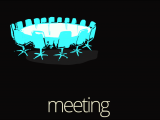
|
16/10/2017 - 20/10/2017
Astrorob 2017 - Fifth Workshop on Robotic Autonomous Observatories Mazagón (Huelva) |

|
30/11/2017 - 12:30
GRB 170817A: a peculiar low-luminosity short gamma-ray burst associated with a NS-NS merger gravitational wave signal Short-duration gamma-ray bursts (sGRBs) have long been proposed to be produced in systems involving the coalescence of double neutron stars (NS-NS), and the observations of sGRB afterglows and host galaxies are consistent with such a conjecture. Based on the estimated event rate density derived from previously observed sGRBs at cosmological distances, the chance of detecting a sGRB within a small volume for detectable NS-NS mergers by advanced... Dr. Binbin Zhang |

|
02/11/2017 - 12:30
W170817/GRB 170817A/AT2017gfo: A Tryptich of Rosetta Stones for Compact Object Astrophysics On the 17th of August 2017, an astronomical event occurred which represents a watershed in our understanding of neutron stars. The LIGO and Virgo gravitational-wave observatories detected the first compact binary inspiral produced by two neutron stars, which was followed about two seconds later by a short GRB, labelled GRB 170817A, detected by the GBM instrument on Fermi. The detection by all three GW observatories allowed the error region to be... Dr. David Alexander Kann |

|
11/01/2018 - 12:30
Dynamics and properties of gas at the Center of the Galaxy In the central parsec of the Milky Way Galaxy the environment of the super-massive black hole (SMBH) presents a complicated composition that includes a very young star cluster mixed with qby tidally stretched clouds of ionized gas (the Minispiral). The Galactic Center's inner few tens of arcseconds have been observed at high resolution with Keck for 20 years, with the primary goal of monitoring stars orbiting the SMBH. This unique baseline of... Dr. Anna Ciurlo |
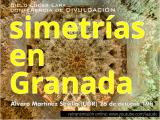
|
26/10/2017 - 19:00
Simetrías en Granada: indagando en la estructura de la belleza Las simetrías forman parte latente, y en ocasiones patente, de la naturaleza y la materia. Álvaro Martínez Sevilla |

|
19/10/2017 - 12:30
Bringing science to kids and general public at the Observatoire de la Côte d'Azur It is important to transmit the science developed in a research institution to the public. This transmission helps to increase the scientific culture of the general public, and also can help to awake scientific vocations in the kids. During this talk I will present several actions carried out at the Observatoire de la Côte d'Azur (Nice, France), to bring astronomy to the school children and also to the general public. I will talk about the... Dr. Olga Suarez |

|
26/10/2017 - 12:30
The Supernovae that Accompany Gamma-ray bursts Energetic supernovae have been seen to occur at the same spatial locations as long-duration gamma-ray bursts (GRBs). These so-called gamma-ray burst supernovae (GRB-SNe) are bright and energetic, and their spectra indicate that material within in the supernova outflow moves at tens of thousands of kilometres per second. The first GRB-SN was observed in 1998, with only 50 in the intervening years. Over the past two decades, the physical... Dr. Zach Cano |

|
05/10/2017 - 12:30
Dust evolution in the interstellar medium Dust grains play a crucial role in many physical and chemical processes in the interstellar medium (ISM) and in protoplanetary disks (PPDs). In the ISM, dust properties influence, for example, the formation and temperature of the major molecules in molecular clouds. It is therefore important to characterise the grain size, structure, shape and material composition in all phases of the ISM. Observations of the dust SED and extinction give... Dr. Melanie Köehler |

|
26/09/2017
La Noche de tod@s Este viernes, 29 de septiembre, en el Paseo del Salón de Granada más de 300 investigadores mostrarán a la ciudadanía la ciencia pública que se realiza en esta ciudad. |

|
23/11/2017 - 12:30
Fighting in Maya ruins: Data Engineering, Data Science, computation clusters and the trans-neptunian search tool IAA is sitting under a gold mine of data, achieved in past observing campaigns, that will be increased with the data coming from next instrumentation. A tool that can exploit the wealth beneath our feet is the Engineering and Data Science (EDS). This lecture will introduces the EDS and its application on preliminary analysis on a concrete astronomical problem: the search of trans-neptunian objects. Two of the tools used in this analysis will... Dr. Rafael Morales |

|
09/11/2017 - 12:30
Conclusions after the first work of Master's degree in Data Science at the IAA Advanced algorithms of automatic learning and/or massive data processing, applied to astronomical data, promise to provide very pleasant surprises. Both types of algorithms are part of the field of Data Science research. Taking advantage of the fact that Granada has a worldwide reference group in Data Science (Soft Computing and Intelligent Information Systems http://sci2s.ugr.es/, directed by Francisco Herrera), a collaboration with the IAA... Dr. Rafael Morales |

|
27/09/2017 - 12:30
High-z proto-clusters with the GTC The study of high-z proto-clusters are important for constraining several cosmological parameters. These clusters are hard to find as they do no yet emit the strong X-ray emission typical of the local clusters. These proto-clusters are however found either around strong QSO’s or more often around strong star-forming galaxies. Incidentally, they are also found around strong sub-millimetre galaxies. We have undertaken a search for Lyα sources... Prof. Jose Miguel Rodríguez-Espinosa |
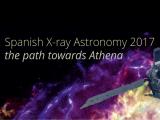
|
23/10/2017 - 25/10/2017
Spanish X-ray Astronomy 2017: the path towards Athena Granada |
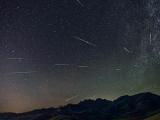
|
31/07/2017
Llega la lluvia de estrellas de las Perseidas El Instituto de Astrofísica de Andalucía (IAA-CSIC) y el Observatorio de Calar Alto participan en dos propuestas de divulgación relacionadas con la lluvia de estrellas |
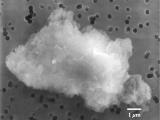
|
25/09/2017 - 28/09/2017
Dust and Ice Particles Spectroscopy and Scattering Granada |

|
16/10/2017 - 12:00
SKA Science Data Centres: A Platform for Global Astronomy M. Wise: The SKA is an ambitious project to construct one the world’s more powerful radio telescopes and enable transformational science across a wide range of research areas. Based on current projections, the SKA Observatory, once operational, is expected to produce an archive of standard data products with a growth rate on the order of 300 petabytes per year. Although the challenges associated with populating and maintaining the SKA science... Prof. Michael Wise & Prof. Ian Wird |

|
21/09/2017 - 12:30
Analogue spacetimes Analogue spacetimes, (as opposed to general relativity spacetimes), arise when applying the mathematics of differential geometry to generic physical systems. As long as the perturbations have finite propagation speed, then the causal structure can be summarized by propagation cones, similar to the light cones of general relativity; thereby defining a conformal structure. Often one can go further and define an analogue Lorentzian metric.... Prof. Matt Visser |

|
14/09/2017 - 12:30
Hydrodynamical models of planetary nebulae with [WC] central stars High-resolution, long-slit spectroscopic observations of two planetary nebulae, M1-32 and M3-15 are presented. The observations were obtained with the 2.1-m telescope at the OAN- SPM, and MES spectrograph. M1-32 shows wide wings on the base of its emission lines, M3-15 has two very faint high-velocity knots. To model M1-32 and M3-15 we built a 3D model consisting in a jet interacting with an equatorially concentrated slow wind, emulating the... Jackeline Rechy Garcia |

|
07/09/2017 - 12:30
High resolution radio imaging of nearby star-forming galaxies: on the way to SKA The Square Kilometer Array (SKA) will be a key instrument in the study of our local Universe. In particular, by virtue of its high sensitivity (both to point sources and diffuse low surface brightness emission), angular resolution and the frequency ranges covered, the SKA will undertake a very wide range of astrophysical research in the field of nearby galaxies. By surveying nearby galaxies of all types with microJy sensitivity and sub-arcsecond... Prof. Antxon Alberdi |
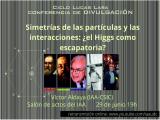
|
29/06/2017 - 19:00
Simetrías de las partículas y las interacciones: ¿el Higgs como escapatoria? La Estructura Unificada de las Partículas Elementales y sus Interacciones ha encontrado dos grandes obstrucciones matemáticas. Una escapatoria a ambos problemas, no resueltos, la proporciona el Mecanismo de Higgs-Kibble, que supone la introducción de la misteriosa partícula Higgs (conocida como partícula de dios, no con la acepción religiosa, sino en el sentido de maldita) en el escenario del Modelo Estándar de Partículas. Víctor Aldaya |

|
12/06/2017
Conferencias sobre Marte: 'The Martian puzzle' Conferencias 'The Martian puzzle' |

|
04/10/2018 - 12:30
The European VLBI Network (EVN) and user cases to improve your science The European VLBI Network (EVN) is a network of radio telescopes located primarily in Europe and Asia, with additional antennas in South Africa and Puerto Rico. The combination of such extended network of telescopes provides an extremely high angular resolution (down to milliarcsecond scales). In addition to that, and given its unparalleled sensitivity on this type of observations, the EVN becomes a genuine instrument to observe an enormous... Dr. Benito Marcote |
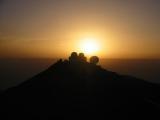
|
05/06/2017
Este verano, visita dos observatorios Ya está abierto el plazo de reservas para las visitas al Observatorio de Sierra Nevada y la antena de 30 metros de IRAM para el este verano 2019 |
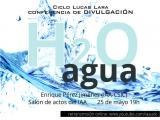
|
25/05/2017 - 19:00
H2O. Agua El agua, H2O, es la matriz de la vida. Al mismo tiempo una molécula sencilla y una substancia muy especial con propiedades extraordinarias y universales, que inextricablemente permea la estructura social, ecológica, biológica y geológica de la Tierra (¿y en cuántos otros exoplanetas?). Haremos un breve recorrido por algunas de las propiedades de la molécula, de la substancia, y de su inmanente presencia. Enrique Pérez Jiménez |

|
09/05/2017
Granada desvela los secretos del universo “Desvelando los secretos del Universo” es una propuesta turística, cultural y formativa que pretende enseñar astronomía a la par que mostrar y hacer vivir la ciudad de Granada |

|
11/05/2017 - 12:30
The Early History of Gamma-ray Bursts The discovery of Gamma-Ray Bursts (GRBs), and the subsequent realization that they are the result of the largest and most distant explosions in the Universe, represents one of the most surprising and fundamental discoveries in astronomy in the past century. Several space-borne and ground-based breakthrough observations in GRBs that led to this realization occurred during the 1990’s. This discovery resulted in the award of the 2011 Shaw Prize... Prof. Gerald J. Fishman |

|
28/04/2017 - 12:30
Gravitational waves: the "other light" from Cosmos First direct detections of gravitational waves were reported in the first half of 2016. These observations represented: i) a confirmation of a fundamental prediction of General Relativity dynamics, and ii) a demonstration of the existence of binaries of stellar-mass black holes capable of merging in a timescale shorter than the Universe's age. This talk will review the basic elements needed to frame the two statements above. The presentation... Prof. J.L. Jaramillo |
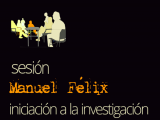
|
19/04/2017 - 12:00
Te espían, te estudian y te controlan: dale importancia a tu privacidad en la red Esta charla va a tratar sobre conocimientos básicos que deberías tener para proteger tu privacidad cuando navegas por Internet. ¿Qué es la privacidad en la red? ¿Por qué debería importarnos? ¿Cuánta información producimos? ¿En qué sentido nos hace vulnerables? "¿Qué más da que me vigilen si no hago nada malo?" ¿De quién debemos defendernos? ¿Qué herramientas tenemos para ello? ¿Quién está de nuestro lado? José Alberto Orejuela García (Universidad de Granada) Salón de Actos del Instituto de Astrofísica de Andalucía (IAA-CSIC) |
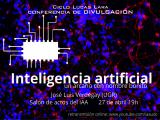
|
27/04/2017 - 19:00
Inteligencia Artificial: Un arcano con nombre bonito ¿Qué puede y qué no puede hacerse con la I.A.? José Luis Verdegay |

|
18/05/2017 - 12:30
Bombs and flares at the Surface and Lower Atmosphere of the Sun A spectacular manifestation of solar activity, is the appearance of transient brightenings in the far wings of the H(alpha) line, originally known as "Hydrogen bombs” but now as "Ellerman bombs" (EBs) after their discoverer. Recent observations obtained by the Interface Region Imaging Spectrograph (IRIS) have revealed another type of plasma ``bombs'' (UV bursts) with high temperatures of perhaps up to 80 000 K within the cooler lower solar... Prof. Viggo Hansteen |
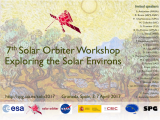
|
03/04/2017 - 07/04/2017
7th Solar Orbiter Workshop Granada |

|
29/06/2017 - 12:30
An overview of the first science from the Sunrise II mission On June, 2013, a second edition of the Sunrise stratospheric, balloon-borne mission took place from Kiruna (Sweden) to Northern Canada. During these five days, the instruments aboard Sunrise were observing the Sun for long periods of stable conditions. New and interesting science has come out from this second flight, which has been published in a special issue of ApJ Supplement. In this talk, I’ll summarize a bunch of these first results to... Dr. Jose Carlos del Toro Iniesta |
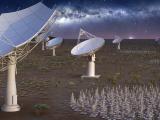
|
31/03/2017
Expertos internacionales en Big Data se reúnen en Granada en el marco del proyecto SKA-Link El Square Kilometre Array (SKA), un radiotelescopio compuesto por miles de antenas distribuidas en Australia y Sudáfrica, será la mayor infraestructura científica jamás construida. Su producción de datos será diez veces mayor que el tráfico actual de internet mundial, y el proyecto SKA-Link trabajará en que la forma en que SKA los analice se convierta en referencia de Ciencia Abierta |

|
25/05/2017 - 12:30
The Faint End of the HI Mass Function Low-mass galaxies are the most numerous type of extragalactic system at all epochs of the universe. The population of low-mass galaxies in the local volume allows unique astrophysical and cosmological perspectives that are unavailable in more distant or more massive systems. The ALFALFA blind extragalactic HI survey has cataloged tens of thousands of gas-rich galaxies in the local universe and has populated the faint end of the HI mass... John Cannon |

|
01/06/2017 - 12:30
Servicios Administrativos en el IAA La actividad científica e investigadora en el IAA, requiere el apoyo y soporte de gestión de las unidades de servicios administrativos. Estas se componen de los servicios económico-administrativos y los servicios generales (Biblioteca, Mantenimiento, Ordenanzas). Estas unidades gestionan los medios y recursos materiales, económicos y personales que el IAA tiene asignado. Se expondrá una visión general de los servicios, con la tareas... Fernado Bordons, Gerente del IAA |

|
08/06/2017 - 12:30
The Dynamic Universe: Adventures in Time Series Analysis Modern astrophysics has revealed a Universe alive with explosions great and small. It is an astonishingly active place, far different from the serene “clockwork Universe” previously envisioned. Our tour of this dynamic Universe includes the active Sun, extrasolar planets and the search for intelligent life on them, the highly active relativistic plasma that is the residue of a stellar explosion in the year 1054 AD, dramatic x-ray... Dr. Jeff Scargle |

|
09/05/2017 - 12:30
Blender 3D, el programa definitivo Blender es un potente programa multiplataforma que se distribuye libremente y es de código abierto. Entre sus aplicaciones más inmediatas está el modelado y la animación 3D, pero es un programa muy versátil que se puede usar para muchos otros propósitos. En esta charla presentaremos ejemplos de uso de Blender para la visualización de datos científicos y divulgación de la Ciencia; para la creación de diseños y piezas tridimensionales que pueden... Dr. Francisco M. Gómez Campos |

|
20/04/2017 - 12:30
Spatially resolved star formation history of CALIFA galaxies: Implications for galaxy formation One year after the final data release of the CALIFA survey, I will revise the results obtained from the analysis of the spatially resolved stellar population properties of galaxies and their impact on our knowledge on galaxy formation and their evolution. I will do special emphasis in the more recent results on the spatially resolved star formation histories of galaxies obtained for our group at the IAA. I will show, in my opinion, the... Prof. Rosa González Delgado |

|
06/04/2017 - 12:30
Fractal analysis in pulsating stars: what is and what we can learn from it I will describe the basic ideas of my line of research, concerning the develop of classification criteria and algorithms for the identification of delta Scuti, gamma Doradus and Solar-like pulsating stars, based on chaos analysis and multi-fractal analysis. In fact multi-fractal behaviour in light curves, which emerges at the onset of chaos, could be the fingerprint of the stochastic mechanism of modes excitation, due to an outer convective... Dr. Sebastiano de Franciscis |

|
27/04/2017 - 12:30
The large abundance discrepancy phenomenon in planetary nebulae The discrepancy between chemical abundances computed using optical recombination lines (ORLs) and collisionally excited lines (CELs) is a major unresolved problem in nebular astrophysics, with significant implications for the determination of chemical abundances throughout the Universe. In planetary nebulae (PNe), a common explanation of this discrepancy is that two different gas phases coexist: a hot component with standard metallicity, and a... Dr. Jorge García Rojas |

|
30/03/2017 - 19:00
Galaxias activas: unas tanto y otras tan poco Muchas galaxias del universo, incluida nuestra propia Vía Láctea, contienen en sus centros agujeros negros supermasivos (de entre unos pocos millones hasta miles de millones de veces la masa del sol). Pero en solo una pequeña fracción de esas galaxias, las llamadas “galaxias activas”, se activan en sus núcleos una serie de mecanismos que pueden llegar a ser muy violentos. Isabel Márquez |

|
23/03/2017 - 12:30
Detection of gravitational waves from space: the LISA mission The idea of detecting gravitational waves from space has been under consideration for more than 25 years. In 2012, the advisory bodies of ESA decided that the next-but-one "large mission", L3, will be devoted to this. Launch is scheduled for 2034. In 2015, the Director of Science of ESA appointed an external committee, with Michael Perryman as chair, to advise on the technical feasibility of the LISA mission, and the technology development... Prof. M. Perryman |
